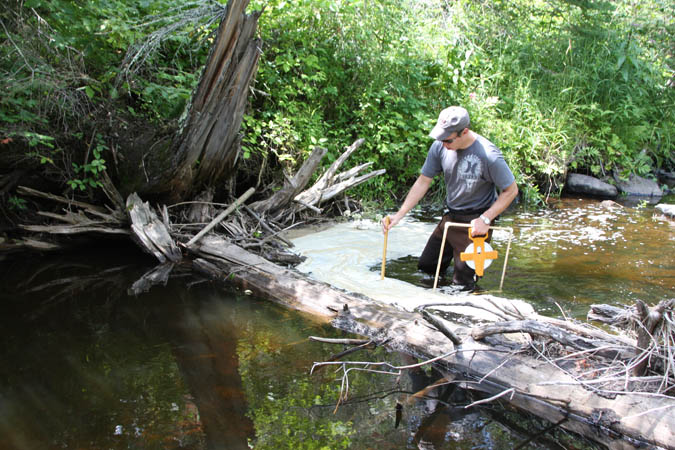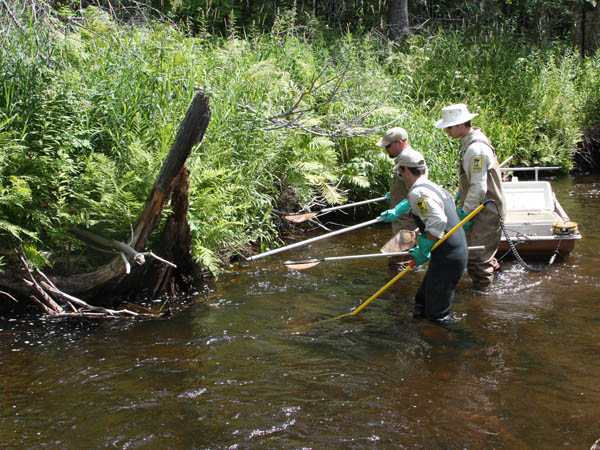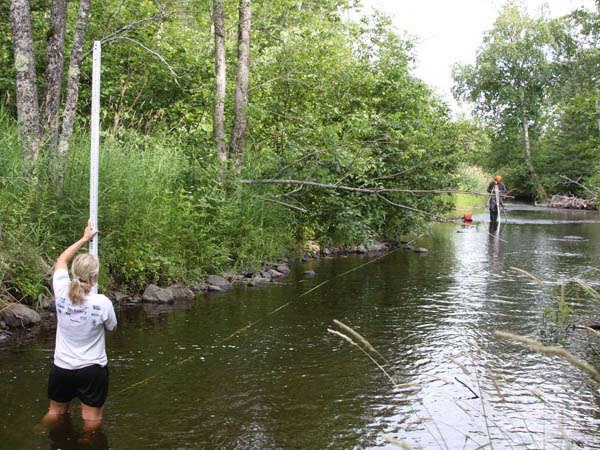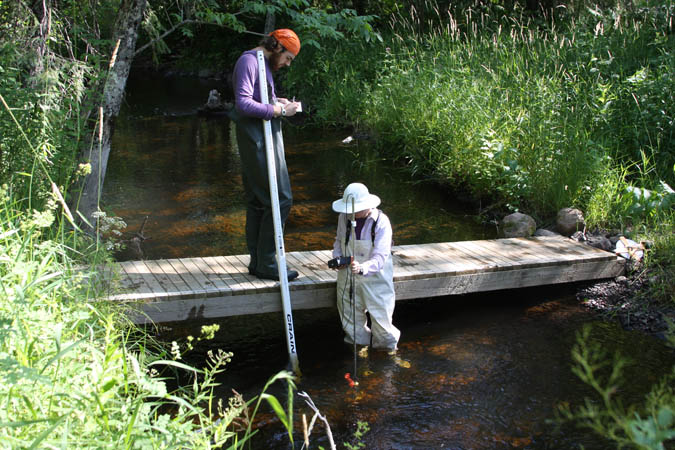2013
Goals: Benefit resident brook and rainbow trout, as well as several migratory species of trout and salmon by providing improved habitat and stabilizing the stream channel.
Methods:
• Placement of woody cover and and rock veining.
• Installation of exclusion fences in riparian corridor.
• Revegetation of disturbed areas with native plants.
Implementation: Construction was completed summer 2013.
Project Contributors: Trout Unlimited, the MNDNR, and GLRI.
2010
Historic logging activity degraded this stream reach by removing logjams, large cover logs and boulders from the stream channel, and altering the hydrology. As a result, the stream lacked deep pool habitat and overhead cover for adult and juvenile trout. This relative absence of year-round trout cover and pool habitat is a limiting factor in providing more productive, stable and resilient fisheries in the Sucker River and many North Shore streams. The project nearly tripled the amount of deep pool habitat and overhead cover by restoring large logs (“large woody debris”) to the channel, and placing rock to scour deeper holes in high water and direct low flows to cover logs.
Several logging cycles have artificially perpetuated a young forest ecosystem which is incapable of naturally replacing this missing large woody debris (LWD) anytime soon. Natural recruitment of large tree trunks or logs to the stream channel will not begin for another 50 to 75 years. While the logging of larger trees within the riparian corridor has ceased and a conservation easement will ensure it is not resumed, it will take approximately 50 years before large limbs, and 75 to 100 years before whole trees, again fall into the channel and floodplain. In 2010 Minnesota Trout Unlimited placed large pine logs, which can last up to 100 years, into the stream channel to scour and maintain pool habitat and provide overhead cover.
Mature second growth forests typically have LWD densities of 10 to15 pieces per 100 feet, and old growth forests have densities exceeding 20 pieces per 100 feet. Before the project, this reach had just 0.25 pieces of LWD per 100 feet, and these few pieces lacked the diameter and length necessary to stay in the reach or provide much cover habitat. The 50 large logs with intact root wads which MNTU restored to the channel now provide cover for fish and wildlife, encourage channel complexity through scour and deposition, provide refugia for fish during flood events, and reduce the erosive power of storm flows. Large rocks were also returned to the channel and placed to create vortex weirs which sour deep holes during high flows. Deep pool habitat, a limiting factor for trout populations here, has already increased nearly 300 percent!
3,500 trees of long lived species were planted within the riparian corridor along the Sucker River, including 1,000 in this reach, to provide a natural source of future LWD and long term benefits, including stabilizing the stream channel, curbing erosion and sedimentation, and providing large in-stream woody cover habitat. Volunteers used matting to keep weed growth down, and caged larger trees to inhibit substantial deer browsing losses.
Partners: More than 50 individuals volunteered on this project. Namebini has opened the property to classes and hosted numerous tours of the project, which are educating dozens of landowners, forest managers, fisheries personnel and citizens about the key role of riparian forests in sustaining coldwater fisheries and healthy watersheds. Dr. Karen Gran (UMD) established a monitoring framework to assess the effectiveness of methods used to create pool habitat. Ongoing surveys by Dr. Gran and her fluvial geomorphology students will help improve habitat enhancement designs, including for the two additional Sucker River projects which MNTU will undertake in 2012.
Special thanks to MNTU’s many partners, including: Carl Haensel; Dr. Karen Gran & the University of MN –Duluth; Gitche Gumee Chapter of TU; Lessard-Sams Outdoor Heritage Council; MN Citizens; MNDNR; MN Legislature; Namebini; NRCS; St. Louis County Land Department; US Fish & Wildlife Service; and many volunteers!




